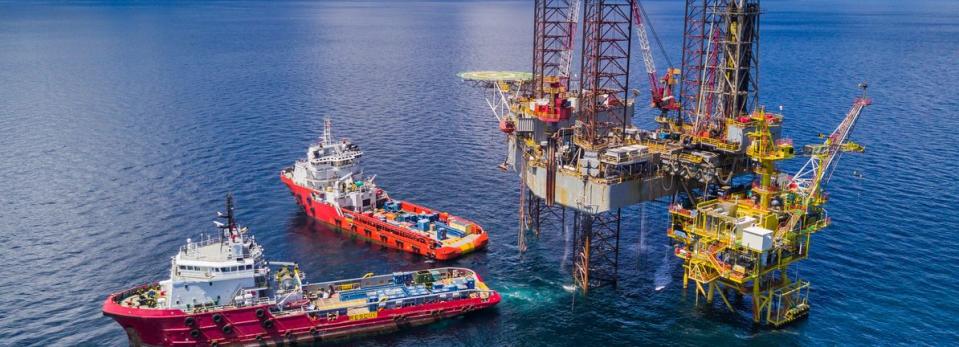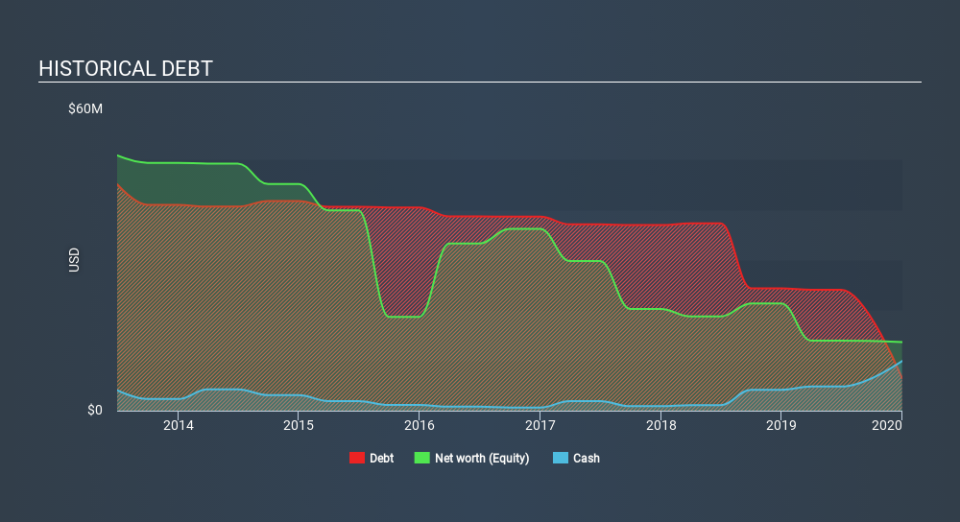Is Empire Energy Group (ASX:EEG) Using Debt Sensibly?

Legendary fund manager Li Lu (who Charlie Munger backed) once said, 'The biggest investment risk is not the volatility of prices, but whether you will suffer a permanent loss of capital. When we think about how risky a company is, we always like to look at its use of debt, since debt overload can lead to ruin. We can see that Empire Energy Group Limited (ASX:EEG) does use debt in its business. But the more important question is: how much risk is that debt creating?
When Is Debt A Problem?
Debt is a tool to help businesses grow, but if a business is incapable of paying off its lenders, then it exists at their mercy. In the worst case scenario, a company can go bankrupt if it cannot pay its creditors. However, a more frequent (but still costly) occurrence is where a company must issue shares at bargain-basement prices, permanently diluting shareholders, just to shore up its balance sheet. By replacing dilution, though, debt can be an extremely good tool for businesses that need capital to invest in growth at high rates of return. The first step when considering a company's debt levels is to consider its cash and debt together.
Check out our latest analysis for Empire Energy Group
What Is Empire Energy Group's Net Debt?
You can click the graphic below for the historical numbers, but it shows that Empire Energy Group had US$6.48m of debt in December 2019, down from US$24.4m, one year before. But it also has US$9.88m in cash to offset that, meaning it has US$3.40m net cash.
How Healthy Is Empire Energy Group's Balance Sheet?
Zooming in on the latest balance sheet data, we can see that Empire Energy Group had liabilities of US$10.1m due within 12 months and liabilities of US$15.9m due beyond that. On the other hand, it had cash of US$9.88m and US$1.81m worth of receivables due within a year. So its liabilities total US$14.3m more than the combination of its cash and short-term receivables.
While this might seem like a lot, it is not so bad since Empire Energy Group has a market capitalization of US$43.9m, and so it could probably strengthen its balance sheet by raising capital if it needed to. However, it is still worthwhile taking a close look at its ability to pay off debt. Despite its noteworthy liabilities, Empire Energy Group boasts net cash, so it's fair to say it does not have a heavy debt load! When analysing debt levels, the balance sheet is the obvious place to start. But it is future earnings, more than anything, that will determine Empire Energy Group's ability to maintain a healthy balance sheet going forward. So if you want to see what the professionals think, you might find this free report on analyst profit forecasts to be interesting.
In the last year Empire Energy Group had negative earnings before interest and tax, and actually shrunk its revenue by 18%, to US$5.4m. That's not what we would hope to see.
So How Risky Is Empire Energy Group?
Statistically speaking companies that lose money are riskier than those that make money. And in the last year Empire Energy Group had negative earnings before interest and tax (EBIT), truth be told. And over the same period it saw negative free cash outflow of US$2.6m and booked a US$12m accounting loss. While this does make the company a bit risky, it's important to remember it has net cash of US$3.40m. That kitty means the company can keep spending for growth for at least two years, at current rates. Overall, we'd say the stock is a bit risky, and we're usually very cautious until we see positive free cash flow. The balance sheet is clearly the area to focus on when you are analysing debt. But ultimately, every company can contain risks that exist outside of the balance sheet. Like risks, for instance. Every company has them, and we've spotted 4 warning signs for Empire Energy Group (of which 1 is potentially serious!) you should know about.
Of course, if you're the type of investor who prefers buying stocks without the burden of debt, then don't hesitate to discover our exclusive list of net cash growth stocks, today.
If you spot an error that warrants correction, please contact the editor at editorial-team@simplywallst.com. This article by Simply Wall St is general in nature. It does not constitute a recommendation to buy or sell any stock, and does not take account of your objectives, or your financial situation. Simply Wall St has no position in the stocks mentioned.
We aim to bring you long-term focused research analysis driven by fundamental data. Note that our analysis may not factor in the latest price-sensitive company announcements or qualitative material. Thank you for reading.

 Yahoo Finance
Yahoo Finance 
